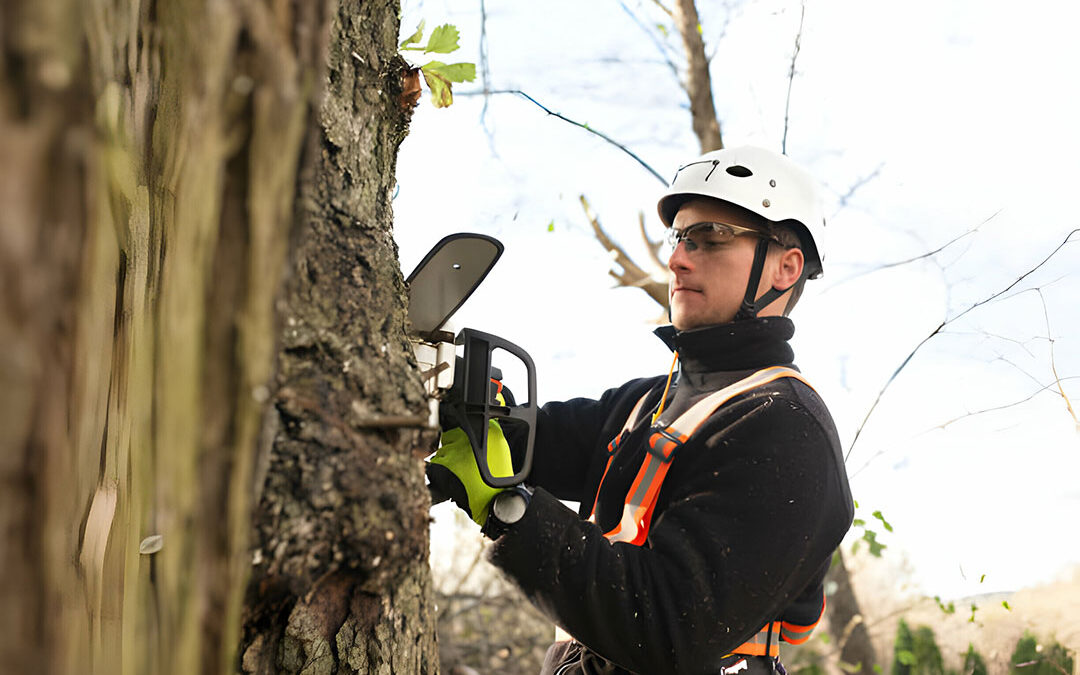In emergency tree removal situations, it is vital to quickly assess tree stability, damage, and proximity to structures or power lines. Contact specialized tree removal services promptly, sharing detailed information and ensuring experienced professionals handle the task safely and swiftly.
Secure the area upon arrival, implement safety protocols, communicate clearly among team members, and utilize necessary safety equipment to assess risks and unstable branches. Understand local permit requirements, obtain essential permits diligently, and comply with laws before proceeding.
Evaluate the tree’s health, position, and potential risks for safe removal. Expert guidance is essential for efficient and secure emergency tree removal.
Assessing the Immediate Risk
When emergency tree removal is necessary, the crucial initial step is to assess the immediate risk posed by the tree meticulously. Evaluating trees for potential hazards involves considering the tree’s stability, any visible signs of decay or damage, the proximity to structures or power lines, and the tree’s overall health.
Safety precautions must be prioritized during this assessment to prevent accidents or injuries. It is essential to look for leaning trees, overhanging branches, or uprooted roots that could indicate a high risk of falling. By carefully evaluating these aspects, professionals can determine the safest and most efficient method to remove the tree while minimizing risks to property and individuals.
Contacting Emergency Tree Removal Services
Promptly contacting specialized tree removal services is crucial to address the urgency of emergency tree removal efficiently. Tree removal specialists have the expertise and tools to handle emergencies swiftly and safely. When contacting these professionals, provide detailed information about the tree’s location, size, and potential hazards.
Their prompt emergency response can help mitigate further risks and damages. Additionally, inquire about their availability and estimated arrival time to ensure a timely resolution. By entrusting the task to experienced tree removal specialists, you can have confidence in effective and safe tree removal in emergencies.
Securing the Area and Ensuring Safety
Upon arrival at the emergency tree removal site, the priority is securing the area and establishing safety protocols to prevent potential risks or accidents. Safety measures must be implemented, including using proper signage to alert passersby and workers of the hazardous situation.
Clear communication between all team members is crucial during the emergency response to ensure everyone knows their roles and responsibilities. Preventive measures, such as assessing unstable branches or uprooted trees, should be taken to avoid further dangers.
Additionally, setting up a designated work zone and ensuring all necessary safety equipment is utilized are essential steps in maintaining a safe environment during tree removal.
Obtaining Necessary Permits and Permissions
Before commencing any emergency tree removal operation, obtaining all necessary permits and permissions per local regulations and guidelines is imperative. The permit process for tree removal can vary depending on the tree’s location and size. Some areas may require a permit for any tree removal, while others may have specific criteria based on tree size or species.
Researching and understanding the specific permission requirements in your area is essential to ensure compliance with the law. Failure to obtain the proper permits and permissions can result in fines or legal consequences. Therefore, it is crucial to follow the permit process diligently and adhere to all permission requirements to conduct emergency tree removal safely and legally.

